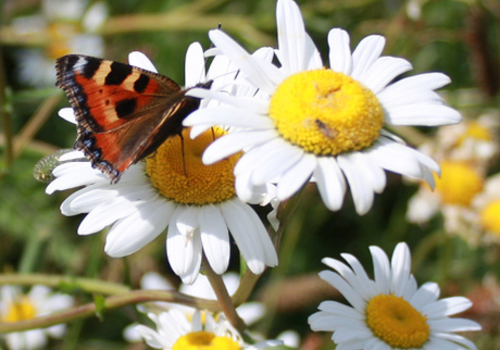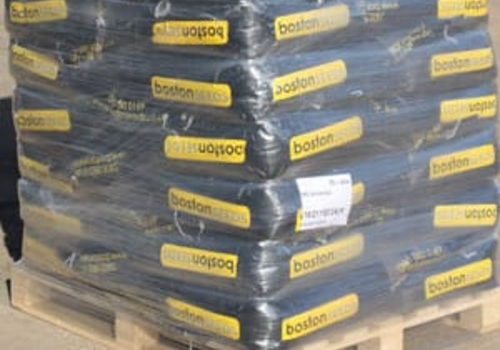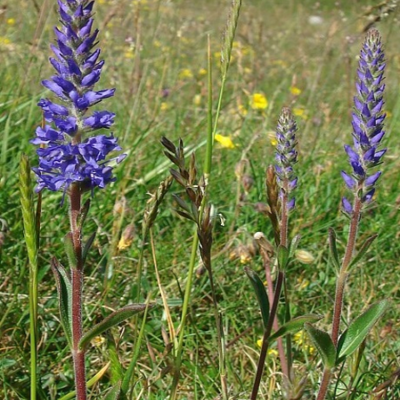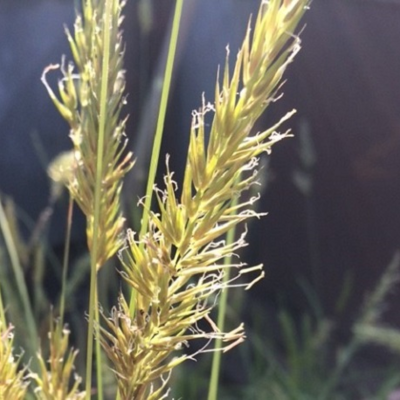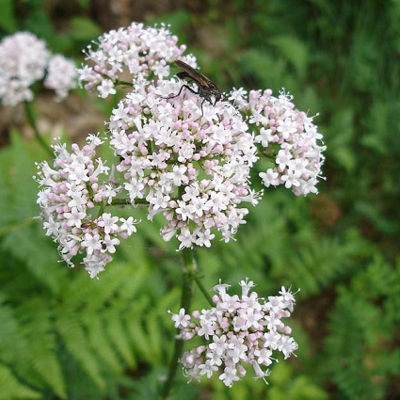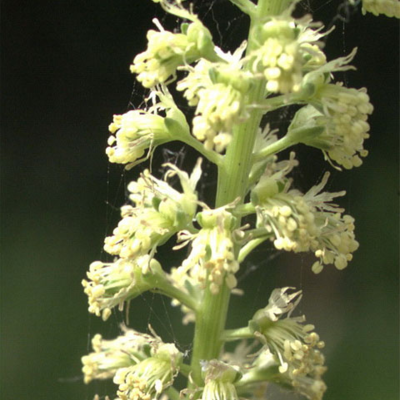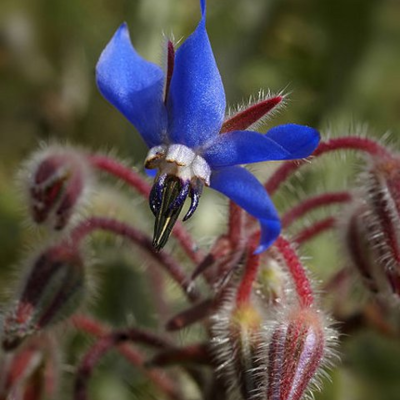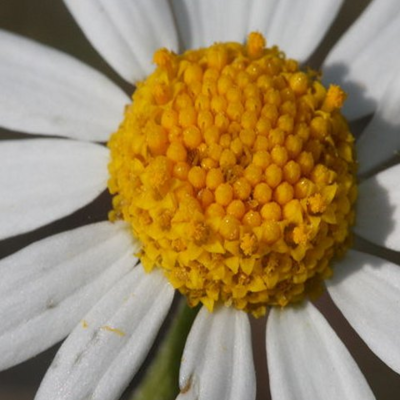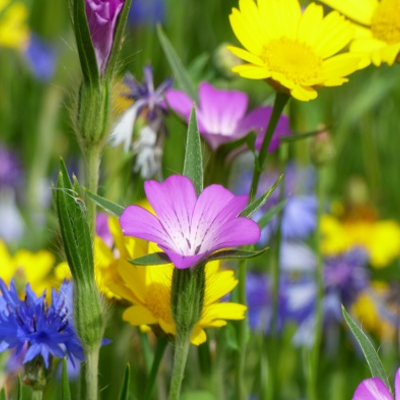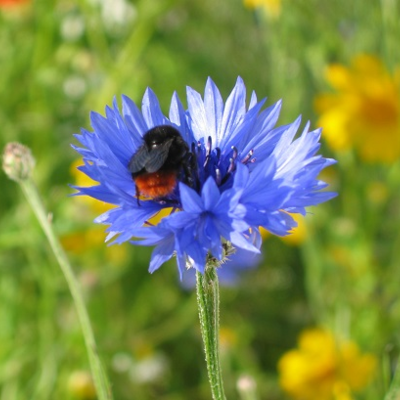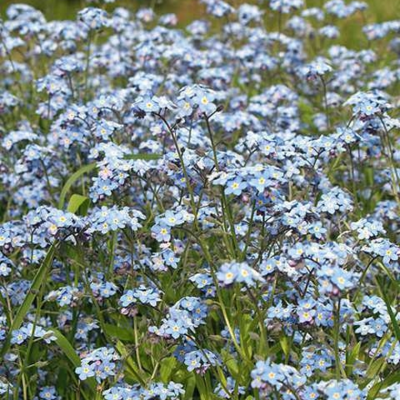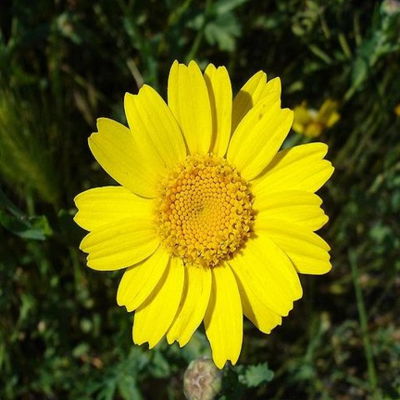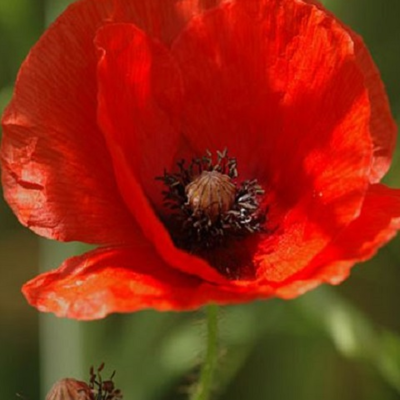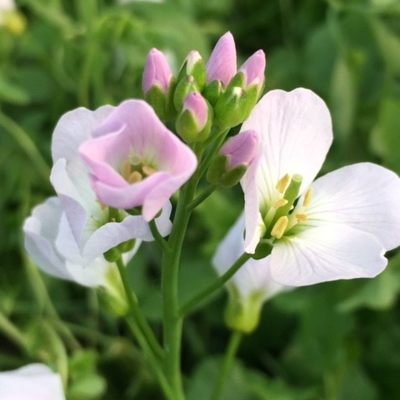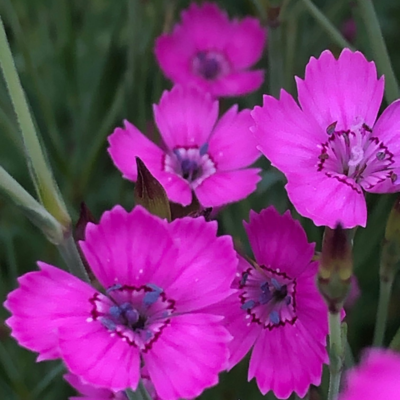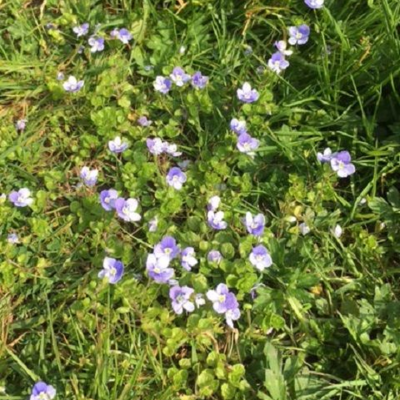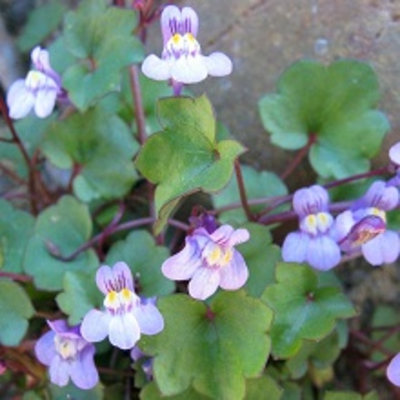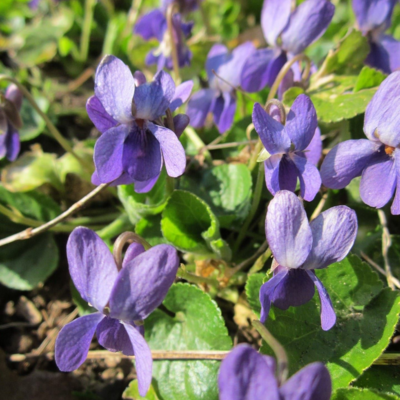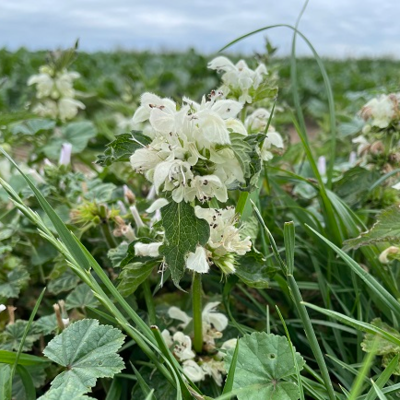Wildflower Plants A to Z
Choose from our entire range of over 100 wildflower plug plants, expertly grown in our very own nursery from high quality, UK native wildflower seed. Our wildflower plugs are ready to be planted straight out into your garden or meadow as soon as they arrive, all year round. Buying individual wildflower plants is one of the best ways to establish your chosen wildflower species, planted individually or as part of a more diverse meadow created from our range of wildflower seeds.
Don't hesitate to get in touch to speak to one of our experts or request a catalogue to view our full range. Ordering regularly or looking for large volumes? Click here to apply for a trade account today - we review all applications within one working day.
Produces dense spikes of miniature florets in regal blues and violets, alongside long, sharp leaves with a subtle silver tint. The sky’s the limit with these showy summer wildflowers: recommended for rockeries and brilliant in borders, this is a versatile and low-maintenance flower that’s practically made for a cottage garden.
- Type: Perennial
- Height: 30-60cm.
- Flowers: July-September
- Soil Requirement: Well-drained
- Light Requirement: Full sun
- Natural Habitat: Calcareous rocks and soils, grasslands
This item is currently unavailable
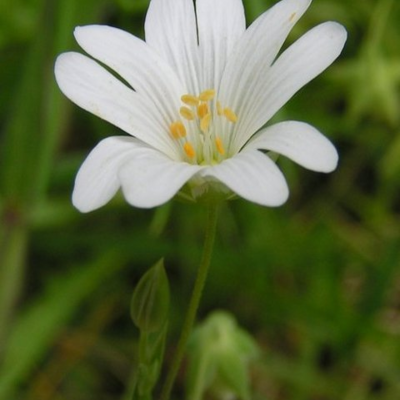

Plants for Pollinators highlights plants selected by the RHS as scientifically proven to tackle the declines in bees, butterflies and other pollinators.
These dainty white springtime flowers are known by a variety of names: one of the most prevalent is ‘Snapdragon’, referring both to its brittle stems and how you may hear its seed pods make a popping sound as they ripen in late Spring. These silvery starbursts are also perfect for pollinators!
- Type: Perennial
- Height: 25-60cm.
- Flowers: April-June
- Soil Requirement: Moist
- Light Requirement: Partial shade
- Natural Habitat: Hedges, banks, wood margins
- Also known as: All-Bone, Easter Bells, Moonflower, Snapdragon
This item is currently unavailable
These early-flowering, light maroon spikelets are wonderfully versatile, and are popular picks for fields and as potted plants for a variety of reasons: as its name suggests, Sweet Vernal-Grass has a sweet, almost vanilla-like taste to it when chewed, alongside its distinct aroma of cut hay. A valuable food plant for brown and skipper butterflies larvae.
- Type: Perennial
- Height: 30-60cm.
- Flowers: April-July
- Soil requirement: Well-drained
- Light requirement: Full sun
- Natural habitat: Wildflower meadows, margins
- Also known as: Vernal Grass, Spring Grass
This item is currently unavailable
Standing proud on tall, grey-green stems, Common Valerian can grow up to an astonishing 1.5m with delicate white-pink flowers atop. It has also been known to be used as a medicinal herb to help promote sleep.
- Type: Perennial
- Height: 15-75cm.
- Flowers: June-August
- Soil Requirement: Damp
- Light Requirement: Full Sun, Light Shade
- Natural Habitat: Woodland clearings and ditches
- Also known as: Garden Valerian, White Valerian, Garden Heliotrope, Setwall and All-Heal
This item is currently unavailable
Much like the wild mignonette, this tall and robust spire of fresh-looking, yellow-green petals adds a vibrant energy to a wild meadow as its verdant, branching stems of narrow leaves shoot up to the sky! Perfect for pollinators, and its colours can help bring nature back to a struggling spot as it tolerates poor soil.
- Type: Biennial
- Height: 100-150cm.
- Flowers: May-October
- Soil Requirement: Well-drained
- Light Requirement: Full sun
- Natural Habitat: Waste ground, roadsides, quarries.
- Also known as: Dyer’s Rocket, Dutch Pink, Jerusalem Ash
This item is currently unavailable

Plants for Pollinators highlights plants selected by the RHS as scientifically proven to tackle the declines in bees, butterflies and other pollinators.
Spice up your garden with the quirky colours of the Borage. Its brilliant blue, star-shaped flowers and hairy, scarlet stems are attractive to pollinators and easy to grow with minimal fuss.
- Type: Annual
- Height: 30-60cm.
- Flowers: June-September
- Soil Requirement: Well-drained
- Light Requirement: Full sun or partial shade
- Natural Habitat: Forest verges, meadows
- Also known as: Starflower Cool Tankard, Tailwort
This item is currently unavailable

Plants for Pollinators highlights plants selected by the RHS as scientifically proven to tackle the declines in bees, butterflies and other pollinators.
The Corn Chamomile's daisy-like flowers are well-known for their attractive aroma that's been compared to apples, and make them perfect for pollinators. A flower that's easy to care for, with a lot more charm hiding beneath its simple appearance.
- Type: Annual
- Height: 20-30cm.
- Flowers: May-July
- Soil Requirement: Well-drained
- Light Requirement: Full sun
- Natural Habitat: Grasslands
- Also known as: Mayweed, Field Chamomile
This item is currently unavailable

Plants for Pollinators highlights plants selected by the RHS as scientifically proven to tackle the declines in bees, butterflies and other pollinators.
Producing magenta and white petals, interspersed with rich indigo veins, these tall, hairy stems of summertime splendour make for a magical meadow flower, especially planted alongside poppies or ox-eye daisies.
- Type: Annual
- Height: 60-120cm.
- Flowers: June-August
- Soil Requirement: Well-drained, sandy
- Light Requirement: Full sun
- Natural Habitat: Grasslands, roadsides
- Also known as: Cat’s Eyes, Kiss-Me-Quick
This item is currently unavailable

Plants for Pollinators highlights plants selected by the RHS as scientifically proven to tackle the declines in bees, butterflies and other pollinators.
These feathery flowers produce pale blue petals tinted with purple - a colour so nice, it's called 'cornflower blue'! Highly attractive to pollinators, and its unique, crisp colouration lends itself to many combinations.
- Type: Annual
- Height: 30-60cm.
- Flowers: June-August
- Soil Requirement: Well-drained
- Light Requirement: Full sun
- Natural Habitat: Grasslands, farmland
- Also known as: Bachelor’s Button
This item is currently unavailable
There is something strangely unforgettable about this flower’s simple-but-unique tiny, baby-blue blooms with rare bursts of pink, and silvery foliage. They’re also perfect for pollinators and have a knack for self-seeding.
- Type: Annual
- Height: 7-25cm.
- Flowers: April-October
- Best Sown: Autumn
- Soil Requirement: Well-drained
- Light Requirement: Full sun
- Natural Habitat: Road-sides, dry grasslands
- Also known as: Blue Mouse-Ear, Scorpion Grass
This item is currently unavailable

Plants for Pollinators highlights plants selected by the RHS as scientifically proven to tackle the declines in bees, butterflies and other pollinators.
These vibrant yellow flowers make for an ideal choice for beds, borders, or even lawns: its bright colour and subtle, sweet scent helps to attract bees and butterflies.
- Type: Annual
- Height: 15-45cm.
- Flowers: June-October
- Best Sown: Spring
- Soil Requirement: Well-drained
- Light Requirement: Full sun
- Natural Habitat: Hedgerows, meadows
- Also known as: Guild Weed, Yellow Daisy, Yellow Ox-Eye
This item is currently unavailable

Plants for Pollinators highlights plants selected by the RHS as scientifically proven to tackle the declines in bees, butterflies and other pollinators.
Scarlet, saucer-shaped, 4-petalled flowers used across the country and beyond as a symbol of remembrance for soldiers lost in the Great War. A hardy annual that self-seeds readily, its vibrant colours are a valuable addition for wild meadows, beds, borders and cottage gardens.
- Type: Annual
- Height: 30-60cm.
- Flowers: May-July
- Soil Requirement: Well-drained
- Light Requirement: Full sun
- Natural Habitat: Grasslands, farmland, roadsides
- Also known as: Blind-Eyes, Flanders Poppy, Headache Plant
This item is currently unavailable
Although similar in looks to the stinging nettle, Red Deadnettle has harmless, heart-shaped foliage with a purple tint. As an early-blooming plant, these whorls of hooded flowers in ruby red to pinkish-purple are a prominent source of early pollen for bees as they build up their nest.
- Type: Annual
- Height: 5-30cm.
- Flowers: March - October
- Soil requirement: Moist
- Light requirement: Full sun, partial shade
- Natural habitat: Waste grounds, field edges, roadside verges
- Also known as: Purple Deadnettle, Purple Archangel
This item is currently unavailable
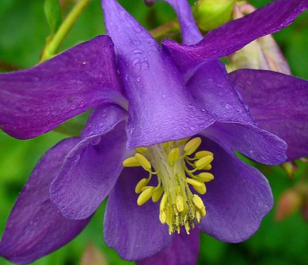

Plants for Pollinators highlights plants selected by the RHS as scientifically proven to tackle the declines in bees, butterflies and other pollinators.
The beautiful, nodding, bell-shaped blooms of the Columbine flower come in a variety of colours, even bi-coloured, though the most common colour in the wild is a vivid blue-violet, contrasted by a shining stamen the colour of honey, which is attractive to bees and butterflies. A cute cottage classic, perfect for pots, beds and borders, as it’s easy to grow and naturalise, though it dislikes being too dry.
- Type: Perennial
- Height: 45–60cm
- Flowers: June-July
- Soil Requirement: Moist but well-drained
- Light Requirement: Full sun or partial shade
- Natural Habitat: Woodlands, roadsides, grasslands
- Also known as: Dove Plant, Lady’s Shoes, Pigeon Foot
This item is currently unavailable

Plants for Pollinators highlights plants selected by the RHS as scientifically proven to tackle the declines in bees, butterflies and other pollinators.
Produces rosettes of leaves at the base of the stem leading up to its four pale pink petals. A flower that captures the essence of springtime; it's named because it blooms the same time you'd start to hear a Cuckoo's call.
- Type: Perennial
- Height: 30 – 50cm.
- Flowers: April - June
- Soil Requirement: Moist but well-drained
- Light Requirement: Full sun or partial shade
- Natural Habitat: Damp meadows, pond margins, riverbanks
- Also known as: Lady's-Smock, Cuckoo Bread, Mayflower
This item is currently unavailable
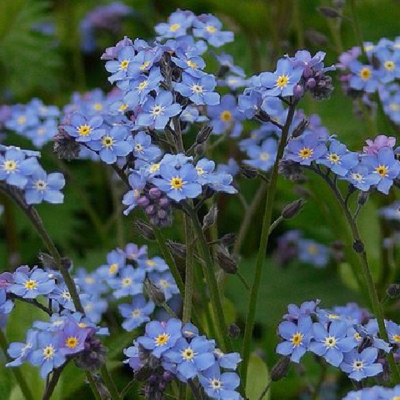

Plants for Pollinators highlights plants selected by the RHS as scientifically proven to tackle the declines in bees, butterflies and other pollinators.
These showy azure blue flowers consist of 5 petals with either a white or an orangery/yellow star shaped centre. An excellent plant for pollinators, for their nectar and pollen.
- Type: Perennial
- Height: 15-30cm.
- Flowers: April-July
- Soil Requirement: Moist, well drained soils
- Light Requirement: Semi shade
- Natural Habitat: Woodland, wet woods, hedgerows
- Also known as: Garden Forget-Me-Not
This item is currently unavailable
The county flower of Roxburghshire is certainly well-named, as its toothy, cerise pink flowers with deep-rose central markings are among our most vivid, and carry all the allure of a fairytale maiden. Recommended for rockeries, this bloom's beauty is easy to get lost in, growing in clusters in a mat of dark silver-green foliage.
- Type: Perennial
- Height: 10-15cm.
- Flowers: May-August
- Soil requirement: Well-drained
- Light requirement: Full sun
- Natural habitat: Hillsides, pastures, dry banks
- Also known as: Lady's Cushion, Meadow Pink, Spink
This item is currently unavailable
A low-growing, creeping beauty that thrives at woodland edges, but also makes for a unique lawn subject- not many other common flowers can compare to these small spikes of azure petals shining in the sun and bringing a little of the blue sky’s beauty down to earth for your garden!
- Type: Perennial
- Height: 10-20cm.
- Flowers: April-July
- Soil Requirement: Moist but well-drained
- Light Requirement: Full sun or partial shade
- Natural Habitat: Roadsides, woodland, grassland
- Also known as: Angels’ Eyes, Blue Stars
This item is currently unavailable
-
These low, trailing plants are recommended for rockeries, containers or garden walls, where they’re sure to delight with small, snapdragon-like flowers in mauve and yellow. So-named for its ivy-shaped leaves edged with red, there’s a certain magic to these miniature blooms- in bulk, they resemble a whimsical fairy village! A hardy climbing plant for those who want to add a splash of colour to a covered crevice.
- Type: Perennial
- Height: 5-10cm.
- Flowers: June-October
- Soil Requirement: Well-drained
- Light Requirement: Full sun or partial shade
- Natural Habitat: Cliff faces, coastal areas, grasslands
- Also known as: Climbing Sailor, Mother Of Thousands, Oxford Ivy
This item is currently unavailable
These famous five-petalled flowers are so beloved that they’ve named their own colour after their beautiful purple colouration. Not only that, but they’re shade-tolerant, making them the perfect plant to sweeten woodland gardens or under hedges, especially in contrast to other famous springtime flora, such as the primrose. A simple flower that’s easy to mix with other meadows, with a wonderful sweet scent which helps to bring in butterflies!
- Type: Perennial
- Height: 5-10cm.
- Flowers: March-April
- Soil Requirement: Moist or well-drained
- Light Requirement: Full sun to full shade
- Natural Habitat: Grassland, woodland, hedgerows
- Also known as: Florist’s Violet, Sweet Pansy
This item is currently unavailable

Plants for Pollinators highlights plants selected by the RHS as scientifically proven to tackle the declines in bees, butterflies and other pollinators.
White Deadnettle has pretty white flowers permeated with green, which appear in intervals along the stem in clusters. This nettle doesn't sting- in fact, it's a very sweet flower, which makes for a great early nectar and pollen source for bees, and its young heart shaped leaves can be used in salads or cooked.
- Type: Perennial
- Height: 15-30cm
- Flowers: March - December
- Soil requirement: Moist or well-drained
- Light requirement: Full sun to partial shade
- Natural habitat: Most of the UK apart from the far North, grassland, woodland, roadsides
- Also known as: Bee Nettle, Snake Flower, White Archangel
This item is currently unavailable
Choosing different wildflower plants by species gives you complete control over when you plant them, where you plant them and what the end result will be. And buying wildflower plug plants instead of seeds, means that you don't have to wait for them to germinate - perfect if speed is of the essence!
The full range of over 100 British wildflower plants species from Boston Seeds is available to buy online in trays of 25, 150 and 500 plug plants and all are available with nationwide delivery.
Want to learn more about the likes and dislikes of your favourite wildflower plants? Our handy wildflower species quide will tell you all you need to know - yours to download and keep for FREE.
Buy With Confidence

